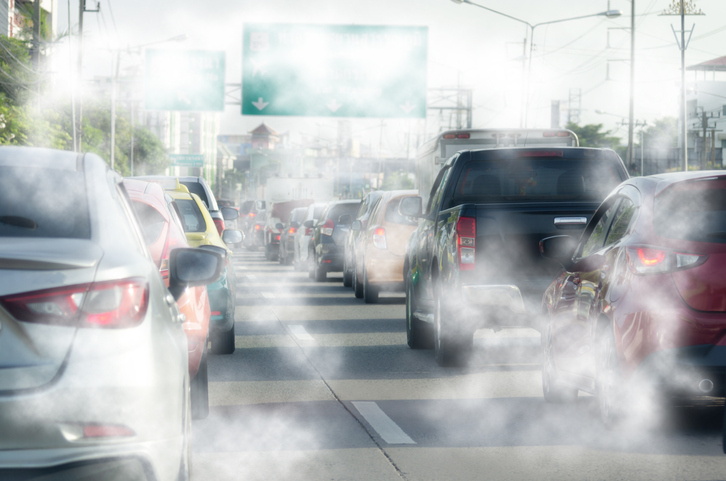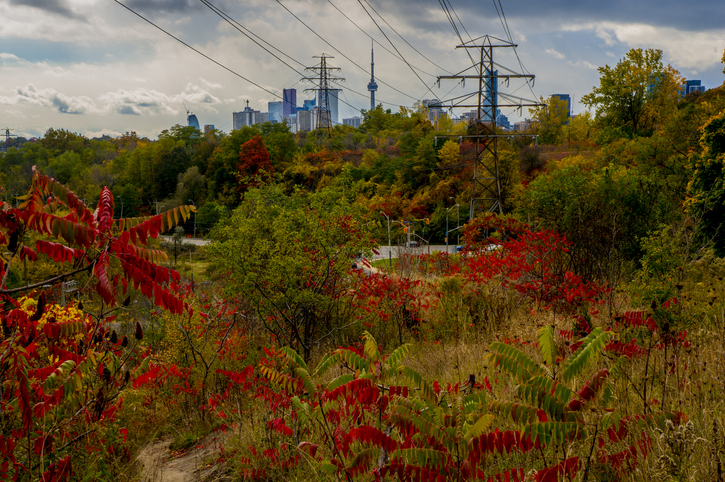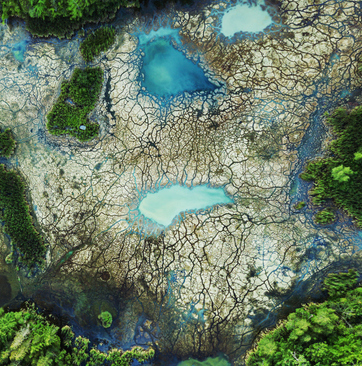Wednesday, September 17, 2025
York University researchers are working to make invisible air pollution visible through an innovative project that merges art, science and engineering.
Focusing on the threats of airborne black carbon – a pollutant resulting from vehicle exhaust and wildfire smoke – the team will create wearable technology that detects these harmful emissions in real time.
The World Health Organization reporting an estimated 4.2 million premature deaths each year caused by ambient air pollution. Ambient air pollution refers to the contamination of the outdoor atmosphere with various pollutants, including gases and particles, that can negatively impact human health and the environment. These pollutants can come from natural sources like forest fires and volcanoes, or from human activities such as transportation, industry, and agriculture.
With this in mind, the “SensingChange: Black carbon air pollution detection and critical artworks” project aims to develop a novel measurement tool and increase public awareness.
“The main idea is to try to tackle the global threat of climate change,” explains Grace Grothaus, a York PhD student and computational media artist. “A lot of attention goes to carbon dioxide and methane emissions, but black carbon emissions are a major contributor to climate change and a main driver of immediate health threats.”
 My Air Wear prototype, depicting how the black carbon particulate will be visible when wearing the vest. Credit: York University.
My Air Wear prototype, depicting how the black carbon particulate will be visible when wearing the vest. Credit: York University.
The interdisciplinary project sees collaboration between scholars and students in the Lassonde School of Engineering – including graduate student Abolfazl Kohenstaniand undergraduate Basak Babadagi, as well as other researchers in the School of the Arts, Media, Performance & Design, such as principal investigator Professor Mark-David Hosale.
The group’s aim is to develop a sensor to isolate and measure black carbon particulates. This sensor will be integrated into electronics that Grothaus will create for smart garments called “My Air Wear,” designed in collaboration with an industrial design lab out of the Ontario College of Art & Design (OCAD). When worn, My Air Wear will light up in response to black carbon emissions, giving a visual indication of how much of the pollutant is in the air.
“We are engineers, atmospheric scientists, artists and designers,” says Grothaus, who is also leading the project’s public art, awareness and outreach initiatives.
Gerd Grau is an associate professor of electrical engineering at York. His lab, through Lassonde, uses novel materials and additive manufacturing techniques to develop devices such as transistors, sensors and more. To design this low-cost, low-waste sensor, his team employed a laser process to convert a polymer into a form of graphene – an electrically conductive material.
Current particulate sensors don’t isolate this specific type of pollution, earning the project a $248,428 Exploration Grant from the Government of Canada’s New Frontiers in Research Fund (NFRF), which funds high-risk, high-reward and interdisciplinary research.
Once the sensors and vests are ready to deploy, the team will call on the public to collect information about black carbon levels in their neighbourhoods. The team plans to engage 10 to 50 citizen scientists in the initial phase, who will collect real-time, location-specific pollution data while wearing the vests and upload findings to the online database.
The project also has a significant artistic component. The team plans to create more elaborate wearable artworks, “AtmoSpheres,” which use motifs such as illuminated lungs to show emissions from passing cars to showcase at parades and exhibitions. There are also plans to seek out collaborations with art galleries. These public initiatives aim to raise awareness about black carbon emissions and their impact on health and the environment.
This fall, the team will launch community workshops to share prototypes, get feedback and iterate in design cycles. The larger community initiatives will launch later, possibly next spring.
To read the original article and for further information, click here.
Featured image credit: Getty Images











